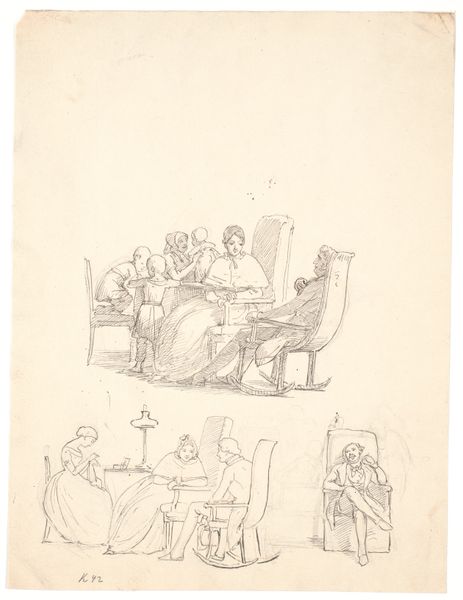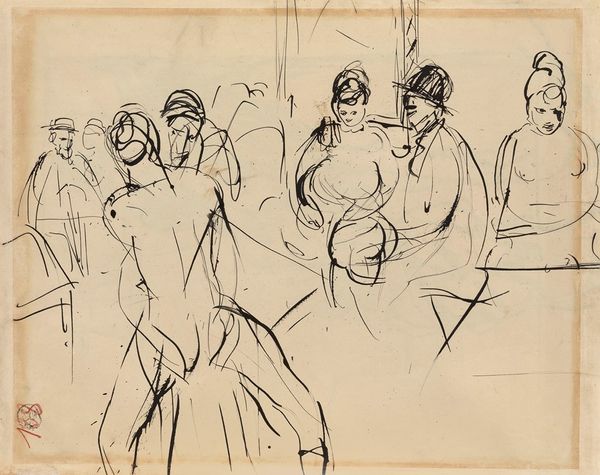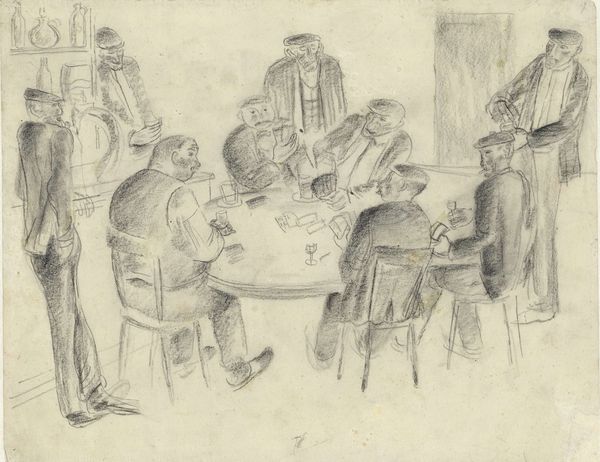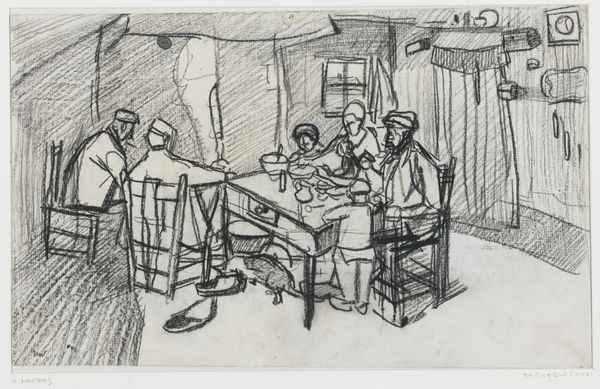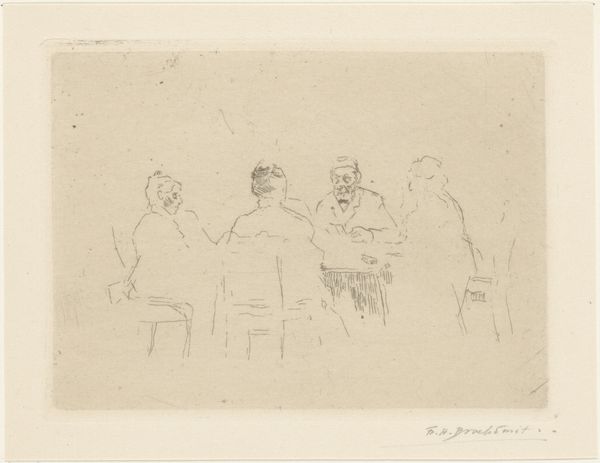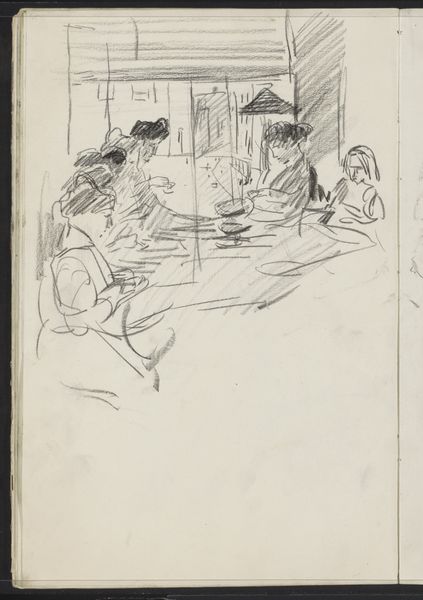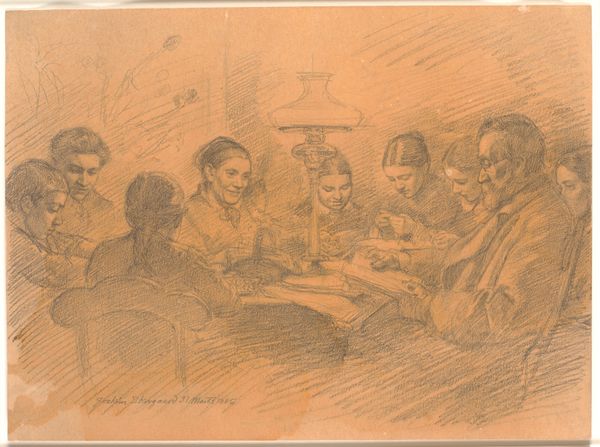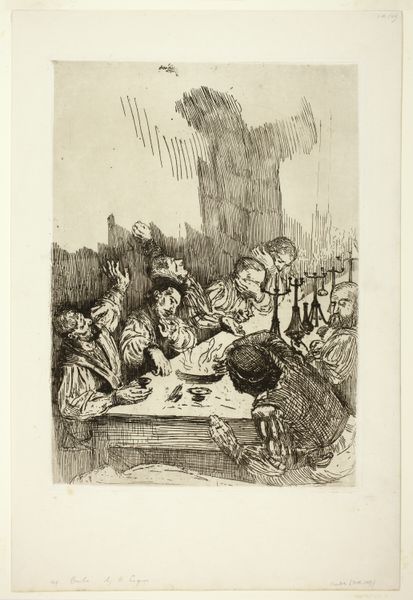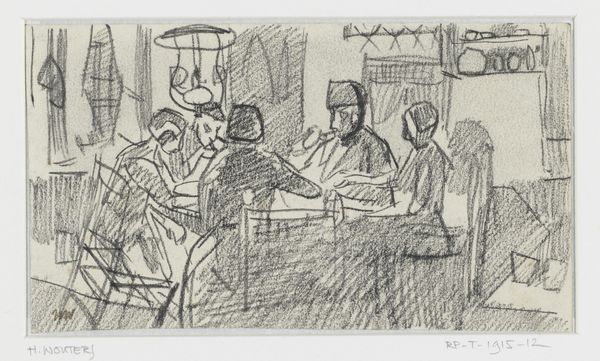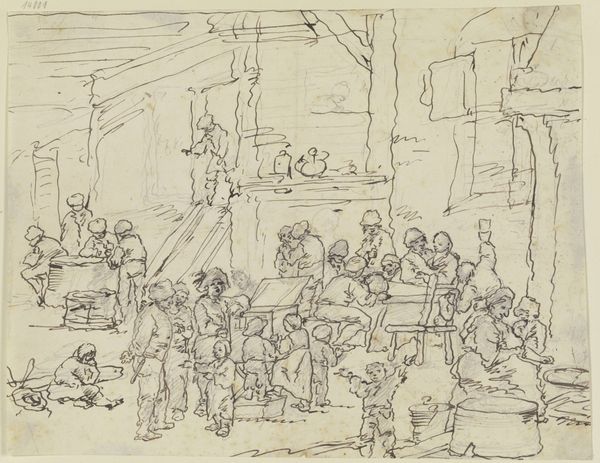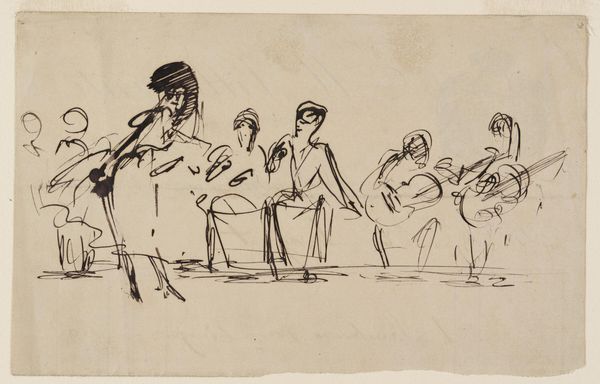
Kunstnerens familie siddende omkring et bord med en petroleumslampe 1908 - 1910
0:00
0:00
drawing, ink, pen
#
drawing
#
ink drawing
#
pen sketch
#
pencil sketch
#
ink
#
pen
#
genre-painting
Dimensions: 280 mm (height) x 388 mm (width) (bladmaal)
Curator: This drawing, elegantly rendered in ink, is entitled "The artist's family sitting around a table with a kerosene lamp." Peter Hansen sketched it between 1908 and 1910. Editor: There's something very intimate and immediate about this piece. The roughness of the pen strokes, combined with the subject, gives a feeling of seeing a private moment, as if caught off-guard. It also highlights the role that artificial light played at the time for these kind of interiors and genre scenes. Curator: Exactly! Hansen, influenced by the changing social landscape and artistic movements, often depicted everyday life. Notice how the figures are clustered around the lamp. It illuminates their faces but also throws long shadows, almost trapping them within their domestic sphere. Consider the politics of the family unit being presented at the time, in relation to urbanisation and class consciousness in the works by the Funen Painters. Editor: It’s fascinating to think about the material realities, too. Ink was relatively accessible, right? So, this medium allows for a broader demographic to participate in art creation than more costly ones. I mean, in its raw state the ink had no value and no form, just black soot and liquid ready to receive and fix gestures... almost magic. I also find interesting how this scene centers around labor and reading activities, reflecting middle class society ideals. Curator: True. Ink sketches were definitely a practical choice, influencing the creation and distribution of visual culture. Hansen isn’t just capturing a family scene; he's participating in and documenting the evolution of the societal value of labor itself and also commenting about family conventions at that moment in history. Editor: I think this type of scene speaks volumes. Not only about societal norms of that period but about a specific group within society: the domestic sphere and working family class are portrayed as fundamental cornerstones, with both light and shadow. What starts as an innocent snapshot hides underlayers of social commentary! Curator: Absolutely. It reveals that even seemingly simple scenes, like a family gathering, can hold complex narratives reflecting their time. Editor: And underscore the inherent value in portraying those so called "trivial" moments, right? Everyday actions that represent human condition more broadly, or what’s universal under different making processes! Curator: Precisely! It pushes us to look beyond the surface of "fine art" to really explore the cultural importance of common realities portrayed via mundane materials and accessible scenes like this.
Comments
No comments
Be the first to comment and join the conversation on the ultimate creative platform.
